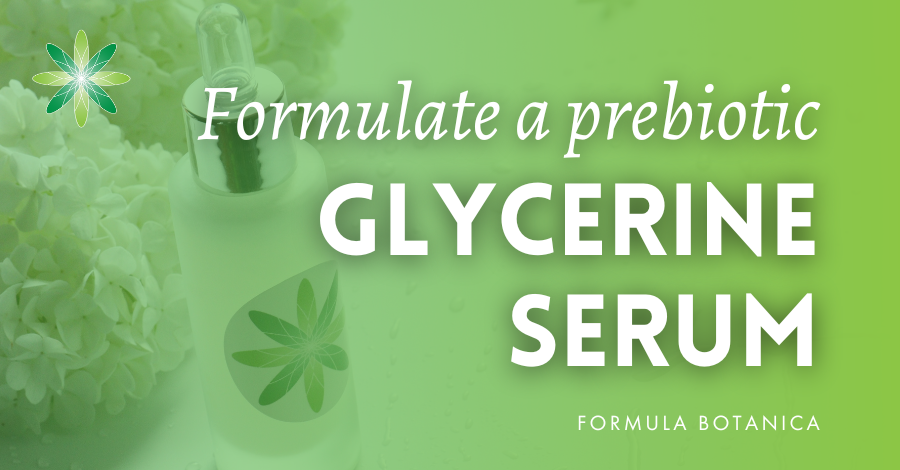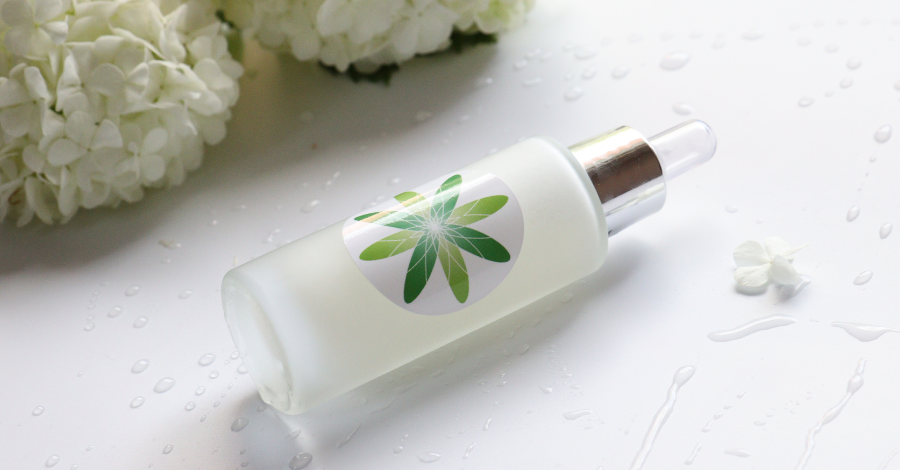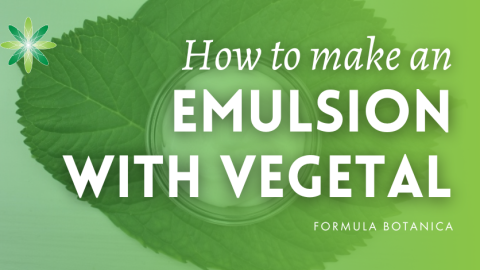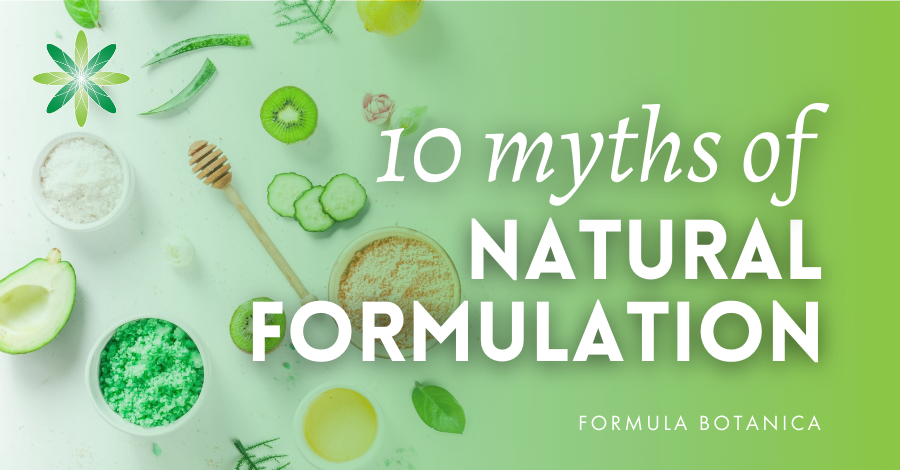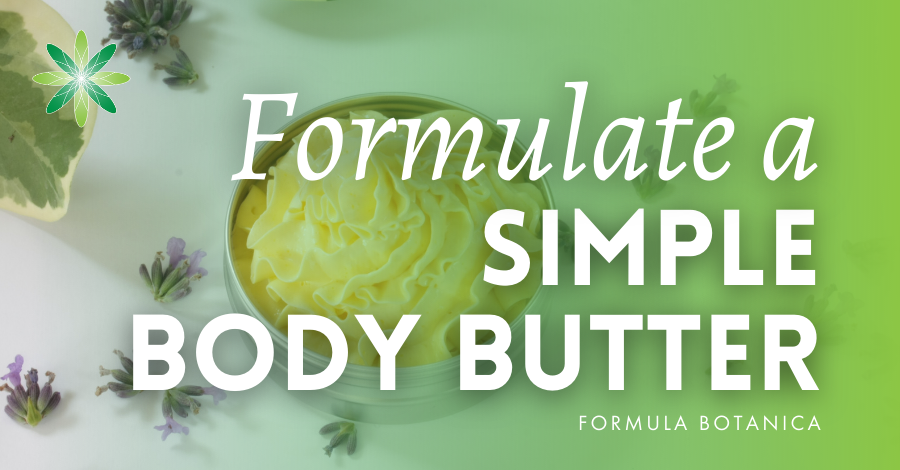Glycerine is undoubtedly the most frequently used ingredient in the cosmetic industry, not only because of its affordable price but also on account of its versatility and significant benefits for the skin. As a raw material, glycerine is known to be safe, and thanks to its excellent sensory profile, neutral odour, and transparent, colourless properties, it is the number one ingredient in almost all types of cosmetics.
Using glycerine in cosmetic formulations
Glycerine is chemically defined as a polyol – a substance that contains three hydroxyl groups – which makes it an excellent solvent. It is easily dissolved in water, so it needs to be added to the water-based phase of the formulation. Simple ways to use glycerine include using it in facial toners, cleansing products, water-based gels, and emulsions. However, an advanced formulator should have no problem incorporating it correctly into anhydrous or hot-fill products such as balms and lipsticks. In these types of formulations, you need to know which ingredients are necessary in order to stabilise the glycerine in the oils.
Glycerine naturally occurs in animal fat and plant tissues (plant oils), and the majority of glycerine for cosmetic use comes from coconut-, soy-, or palm-derived fatty acids. If you want to have your cosmetic products certified vegan, ensure your supplier’s documentation refers to vegetable glycerine.
As glycerine is such a common functional ingredient that is now being promoted as a hero ingredient, as in our serum below, we have a dedicated formulator’s guide to glycerine for you to read.
Our formulation and the skin microbiome
Let’s now turn to the other key aspect of our serum formula: the prebiotic. First, we need to recap the skin microbiome to provide some background on why we include a prebiotic ingredient.
There are specific strains of microorganisms that live on human skin, and together they form an ecosystem that is unique for everybody. This ecosystem is called a skin microbiome and predominantly protects human skin from the invasion of pathogens, but it also has a direct effect on the skin’s physiological processes.
These residential (also called commensal) bacteria provide the first line of defence against microbial pathogens by producing molecules (antimicrobial peptides) that influence the growth and colonisation of different bacterial strains. Since we know that skin condition strongly depends on microbiome “health”, the cosmetics industry is keen to explore ways to reinforce this unique “living shield” to protect the skin or restore its natural balance if necessary.
Some ingredient manufacturers have therefore developed raw materials inspired by the need to maintain and nurture the skin microbiome and have brought to market ingredients defined as offering probiotic, prebiotic, or even post-biotic properties to assist in this.
View this post on Instagram
Defining pre-, pro-, and post-biotic ingredients
Probiotic, prebiotic, and post-biotic: what do these terms mean? Let us have a closer look at individual explanations and ingredient examples.
Probiotics: The term probiotic refers to a product containing living bacteria, which can be a problem for cosmetic products where, due to safety reasons, the volume of microorganisms has to be strictly monitored and kept below certain legislative limits.
Post-biotics: Following on from our point about the challenges of using probiotics, we can, however, find options to include some components from bacterial cells that can be beneficial for the skin. These “active molecules”, lysates, bacterial ferments, and purified metabolites are called post-biotic ingredients.
Prebiotics: These ingredients are easier to explain. Prebiotics provide a supportive environment (highly nutritive) for commensal bacteria. Chemically, they belong to sugars (oligos) as well as polysaccharides, ideally derived from plant biomass. The most common ingredients include fructose, glucose, inulin, xylitol, glucomannan, or fructooligosaccharides. Our formulation includes inulin.
Our ingredients: prebiotic glycerine serum
Glycerine: as the name of the formula implies, our key ingredient in this formulation is glycerine, which is present in a higher percentage than usual. Paired with our prebiotic inulin (see below), our formula helps support homeostasis (the self-regulating, optimal state) of the natural skin microbiome.
Sodium PCA: the next valuable ingredient in this formula is sodium PCA. This amino acid shows excellent humectant, rehydrating, and conditioning properties when applied to the skin.
Aloe vera water: this adds a soothing and protective effect.
Inulin: this ingredient is a natural plant sugar usually extracted from chicory roots but present in many other plant species. It is defined as a prebiotic ingredient since it provides an excellent source of nutrition for microbiome (commensal) skin bacteria.
Our formulation: Prebiotic glycerine serum
Makes: recommended trial batch size: 100g.
Formulation: a cold process.
Time taken: 15 minutes.
Level: beginner-level formulation to personalise and adapt.
| Phase | Ingredients | INCI | Weight (g) |
| A | Aqua | Aqua | 63.50 |
| A | Aloe vera water | Aloe barbadensis leaf juice | 10.00 |
| A | Glycerine | Glycerin | 20.00 |
| A | Sodium PCA | Sodium PCA | 2.00 |
| B | Inulin | Inulin (and) fructose | 2.00 |
| C | Siligel™ | Xanthan Gum (and) Lecithin (and) Sclerotium gum (and) Pullulan | 1.50 |
| D | Euxyl K903® | Benzyl alcohol (and) Benzoic acid (and) Dehydroacetic acid (and) Tocopherol | 1.00 |
| Lactic acid | Lactic acid | q.s. | |
| Total: 100.00 |
Equipment:
- Scales
- Glass beakers, glass rods, some spoons and spatulas
- a watch glass
- hand whisk or an overhead stirrer
- pH strips or pH measuring tool
- Suitable container
Method of Manufacture
- Preparation
Prepare all the ingredients and your equipment, such as scales, beakers, spoons, spatulas, a mixing device, and pH meter or pH strips. Sanitise your utensils and work area, and make sure your working area, as well as your clothing and equipment, is in line with good manufacturing practice (GMP) standards.
- Weighing out
Weigh all ingredients starting with water, aloe vera juice, sodium PCA, and glycerine. Place them together in a beaker and mix well.
- Add inulin
Once mixed fully, add the inulin powder and mix to dissolve.
- Add gelling agent
Next, add the gelling/thickening agent, Siligel™. Ideally, this ingredient should be added under continuous mixing to prevent the formation of clumps.
- Preservative
Then add the preservative, Euxyl K903, and check the pH.
- pH adjustment
Adjust to pH 5-5.5 if necessary using a suitable pH adjuster.
- Decant and label
Decant into a suitable container and label your glycerine serum with name, date, and batch number.
Formulation notes
- This formulation provides inspiration on how to prepare a simple, water-based serum with a high glycerine content. You can use water-soluble extracts or hydrosols of your choice, as well as different water-soluble actives.
- Make sure you pay attention to the addition of lipophilic ingredients should you wish to add any, as these need to be incorporated into the blend using a proper amount of solubiliser.
- Stability disclaimer: this formulation is based on water and water-soluble ingredients, which is why we need to properly select the type of preservative used for this formulation. There are plenty of different preservatives and preservative alternatives on the market, so make sure you always search for a preservative suitable for the type of product you make and one that also covers broad-spectrum efficacy against bacteria, mould, and yeasts. It is also important for your chosen preservative to respect the optimal pH for this product. In addition, check the supplier’s recommendation for the preservative’s dosage to ensure its maximum efficiency in this type of product.
- Antimicrobials: prebiotic formulations usually include alternative preservatives/antimicrobials, by means of, for example, higher percentages of ingredients such as propanediol, pentylene glycol, or even glycerine. There are also some modern, efficient antimicrobial compositions; Leucidal® is a registered trade name for a fermented type of antimicrobial mixture with proven efficacy and designed to cover the full protection of cosmetic products. These types of ingredients must be used in the correct quantities and at precise pH levels to ensure full efficiency. Although preservative compositions are highly reliable, patented blends of ingredients, it is the quality of the raw materials used that also plays a critical role in product safety.
- Make sure all your cosmetic products are correctly tested for stability and safety before being sold to the public.
Suggested suppliers
Many of the suppliers below ship internationally. We indicate their country or regional base.
Aromazone (EU).
Aromantic (UK)
Alexmo Cosmetics (EU) – Inulin and Siligel™.
Manske (EU)
Soap Kitchen (UK)
Elemental (EU)
Lotioncrafter (USA)
Essential Wholesale (USA)
Go Native (New Zealand)
Naturally Balmy (UK)
Soap & More (Canada)
Further reading and references
(i) W. Fluhr, et al; 2003: Glycerol Regulates Stratum Corneum Hydration in Sebaceous Gland Deficient (Asebia) Mice.
FREE TRAINING
Learn how to become an
Organic Skincare Formulator
FREE TRAINING
How to become an
Organic Skincare Entrepreneur
FREE TRAINING
How to become an
Organic Skincare Entrepreneur
Leave us a comment

Miroslava is a former grading tutor at Formula Botanica. She has a Ph.D in neuroscience, expertise in biology and chemistry, and a lifelong passion for natural cosmetic formulation.

